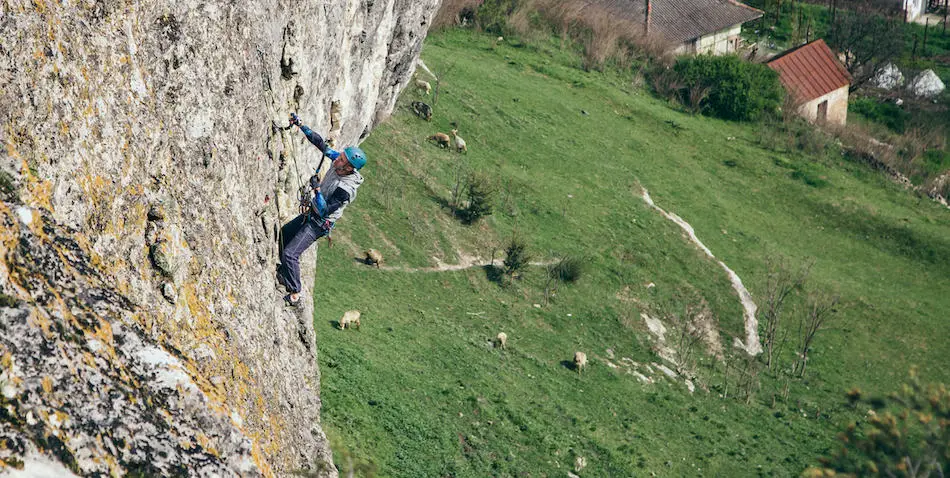
After seeing the damage caused by dry tooling at a local crag, I did some research to find out what the ethics were around dry tooling.
So, does dry tooling damage the rock? Where can you dry tool? Yes, dry tooling will leave permanent scars and chips on the rock. You should not dry tool on established climbing routes. This is out of respect for future generations who don’t want their climbs to be ruined.
Because of the fact that you’re using sharpened ice gear when dry tooling, you’re going to scratch and gouge the rock with your crampons and ice axes, no matter how careful your placements might be. This will leave scars on the rock and may chip away at small handholds, making the route more difficult. Over time, if lots of people dry tool in one area, it will increase the scope of the damage and may completely ruin a route. In the following guide, I talk more about the ethics of dry tooling, as well as how to find the best spots to dry tool without making anyone angry!
Dry Tooling Ethics
Ethics in climbing is a weird question, and with dry tooling there seems to be a lack of consensus within the community. Where can you dry tool? Why do rock climbers have the rights to certain routes? Doesn’t all climbing damage the rock, to some degree?
There are no solid answers to these questions, but after reading lots of forums and talking to some more experienced climbers, I’ve tried to create some answers as to what the general beliefs are within the climbing community.
Does Dry Tooling Damage the Rock?
This one isn’t something that’s up for the debate. Yes, dry tooling will damage the rock, no matter what rock you’re on, how sharp your tools are, or how carefully you make your placements.
The fact of the matter is, you’re climbing with ultra-sharp axes in your hands and knives strapped to your feet. These pieces of gear ae designed to drive into ice and stick in place so that you can dangle your life off of them. When put against rock, it’s going to scrape at the surface and leave a mark.
Now, at first glance, this might not seem so terrible. So what if you leave some scratches? That doesn’t damage the quality of the actual climbing, right?
Well, yes and no. For some people, even the presence of scratches can deface the rock and take away from the experience, similar to how a lot of climbers would be mad if someone graffitied their favourite route.
With dry tooling, however, the damage can actually go a lot further. The teeth on the underside of crampons and axes will bite into the rock, pulling some off the surface. Over time, and with lots of people dry tooling, this will wear down certain holds and damage the quality of the route. Similarly, you run the risk of actually pulling off or breaking entire holds, which will alter the climb even further.
So, not only does dry tooling scratch and deface the rock, it can gouge at hand/footholds in a way that will permanently alter their quality. The fact that dry tooling damages the rock is the main reason that it causes so many ethical questions.
What Are Some Absolute ‘Never Go’ Zones?
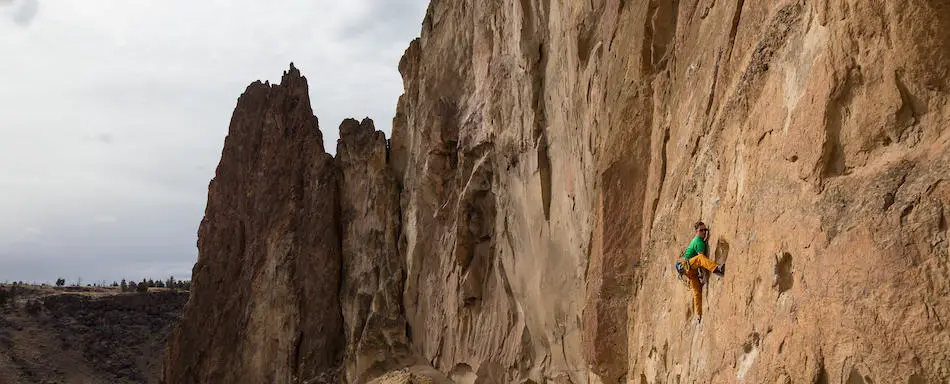
Now that we know that dry tooling does cause damage to the rock, let’s talk about some definitive ‘no go’ zones. Although there are no formal rules or regulations backing up what I’m saying, you can be pretty sure that if you dry tool somewhere mentioned on this list, people are going to be pretty annoyed at you.
The general consensus in the climbing community is that you should avoid dry tooling anywhere that is an established and exclusive rock-climbing route.
What does that really mean? If there’s a piece of rock that a) is used for rock climbing, and b) isn’t used for any other activity (such as mixed climbing), you should NOT dry tool there under any circumstances.
This was about the one fact that I found just about everybody I spoke to agreed on. If it’s an established rock-climbing route, do not dry tool on it.
Remember, people get very attached to routes. They set them, clean them, spend months of their lives working on them, and develop and emotional connection to certain lines. In certain areas such as Yosemite or the Red River Gorge, you will have ‘classic’ climbs, where people come from all over the world to test their skills on.
It’s unfair to those people if you come along with your axes and crampons and cause permanent damage to the rock, just because you thought it would be a fun line to dry tool. If there are signs that people rock climb at a certain location, don’t dry tool on it.
This extends to untouched routes, as well. Say you’re at a well-known climbing area and you notice one cliff section that has no bolts and no routes up it. Could you dry tool there?
Doing so might not be as heinous as tooling on an established route, but I would still advise staying away. There’s a good chance that sometime in the near future, someone is going to want to put up a route on that rock. If people have found a crag with all the criteria needed to climb— good rock, a solid approach, doable routes, etc.— it’s best to just let them keep it.
Doesn’t Rock Climbing Also Damage the Rock?
One of the questions I always see pop up is: doesn’t rock climbing also damage the rock? Shoes wear down foot placements, bolts leave scars, people will pull out handholds, right? What makes dry tooling so evil? Why are climbers so entitled to all of the good rock?
This is a valid question, and I understand the frustration behind it. However, there are a few things that you should consider before you use this as an excuse to dry-tool your way up the local crag.
First and foremost is that, if you’re dry tooling at an established climbing location, you have to acknowledge that the climbers were there first. ‘Finders keepers’ may not be the most nuanced rule, but it actually works pretty well in this scenario. Whoever set the routes intended for them to be rock climbs, not dry tooling lines.
Secondly, while rock climbing does cause damage, it tends to cause less damage than dry tooling does. Sure, people’s shoes will wear out footholds, and sometimes holds will break off, but it’s not going to cause the same scratching and gouging that ice tools will.
Finally, the fact stands that a lot more people rock climb than they do dry tool. If you set up a high-quality rock route, hundreds (if not thousands) of people will be able to enjoy that route, for years to come. Dry tooling is much more of a niche sport, so the benefit of a good dry-tooling route is spread much more narrowly. Because of that, rock climbing often takes priority, and climbers will be able to call dibs on the good pieces of rock.
So, while I understand that it’s frustrating to have to take a backseat to other people’s hobby, it’s good etiquette to leave the rock climbing routes to the rock climbers, and instead to find your own place to dry tool.
Where Can You Dry Tool?

It’s a well-agreed fact in the rock-climbing community that you shouldn’t dry tool on established rock-climbing routes. That begs the question: where can you dry tool? What area is left unclaimed?
Luckily for those of us who love dry tooling, there are lots.
Choss Piles / Bad Rock
When in doubt, go where the rock climbers won’t.
The best way to ensure that you’re not stepping on anybody’s toes is to find a wall that no climber would ever want to touch due to the quality of the rock.
I’m being a little over dramatic, obviously. There are going to be some choss piles— cliffs with poor-quality rock the tends to break off when you put weight on it— that will be too low-quality to dry tool on. After all, you still need to be able to hang off of the stuff and place protection.
However, finding sub-par quality rock that’s good enough for dry tooling but too crumbly to ever be considered a ‘classic’ rock climbing route and be a good way to make sure you don’t piss anybody off. No one will complain that you’re scraping up the rock if it’s low-quality in the first place.
Now, obviously, this raises some questions of its own. Why is it that the rock climbers get all of the good rock, even the stuff that there are no established routes on?
That definitely doesn’t have to be the case. In the next few sections, I break down some options as to how you can dry tool on good-quality routes. Choss piles, however, remain a good option for anyone who wants to be extra cautious to not annoy anybody.
Dry Tooling Crags
If you’re lucky, there will be enough ice climbers in your local climbing community for a dry tooling crag to have been established.
This is an area with routes that are specifically designated for climbing with tools on bare rock, and all of the damage that comes with it. Routes will be designed with dry tooling in mind, which can lead to a lot of cool and interesting moves.
Because of their intended use, dry tooling crags can have a few differences from normal climbing crags. Firstly, for many of the reasons discussed above, they will often be placed on the cliffs that climbers don’t want. The approaches might be longer, the rock will be of worse quality, and the scenery may not be as nice.
Secondly, because of all of the damage that tools cause on the rock, it’s common for route setters to reinforce key holds to ensure that they maintain their structure. This practice, which would be seen as an atrocity to many rock-climbing purists, is widely accepted within the dry tooling community. Those who climb with tools often care less about the purity of the sport and more about having fun.
Now, there are some downsides to dry tooling crags. They probably won’t be used as frequently as climbing crags are, meaning that the routes won’t be as clean. You need to look out for loose rock and be very careful where you place your belayer.
Secondly, the routes may not be as fun. Many dry tooling crags simply become ‘pull-up’ routes, where the moves are extremely basic and most of the challenge rests in not getting pumped out. There won’t be a lot of interesting beta discovery or thought-provoking movements going on.
Still, that’s not always the case. Many crags, such as Canmore’s Drive-In, have been set to be interesting, challenging, and fun. As dry tooling continues to grow as a sport, so will the availability of good routes.
Mixed Routes
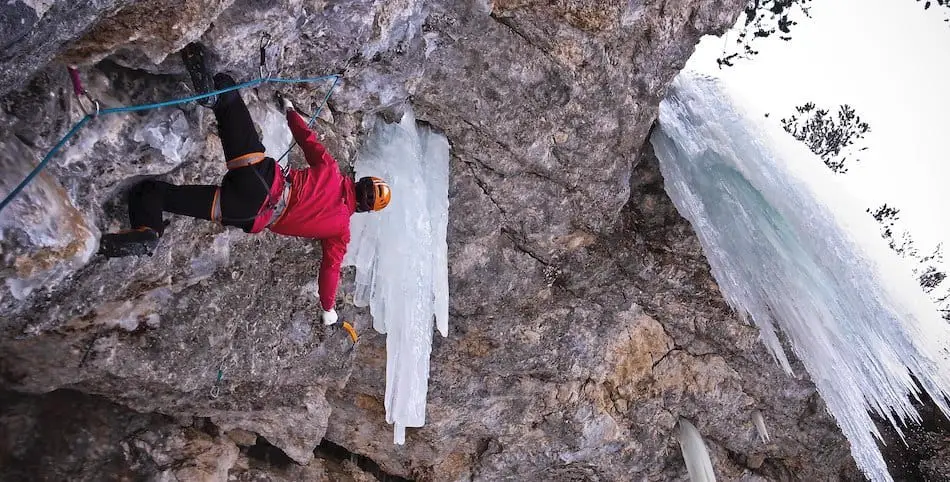
Remember when I said earlier that you should avoid climbing anywhere that is an ‘established and exclusive rock-climbing route?’
Mixed routes are the loophole to this rule.
Any rock climb that freezes over in the winter— that is, turns into a viable ice climb— has long been seen as fair game to dry tool on. This is due to the advent of mixed climbing, which is half ice climbing and half dry tooling. Mixed climbing will leave the same scars on the rock as dry tooling will, but it’s seen as less sinful as dry tooling is.
This seems contradictory, but it’s one of those weird logic quirks that seems to be widely accepted. Dry tooling on an established climbing route? Reprehensible. Ice climbing near and established route and deciding you want to place your tools on the rock so that you can do a mixed route? That’s fine.
I can’t explain this contradiction, but I can tell you to go ahead and take advantage of it. If you know of any climbs that are common mixed routes, you can safely assume that you will be able to dry tool there during the summer or shoulder season.
Mixed routes can have some advantages over dry tooling crags. They’re likely to have more interesting moves on higher-quality rock, so you won’t need to worry as much about getting stuck in a ‘pull-up’ scenario. They might also be easier to get to and have less rockfall hazard.
Indoor / Manmade Walls
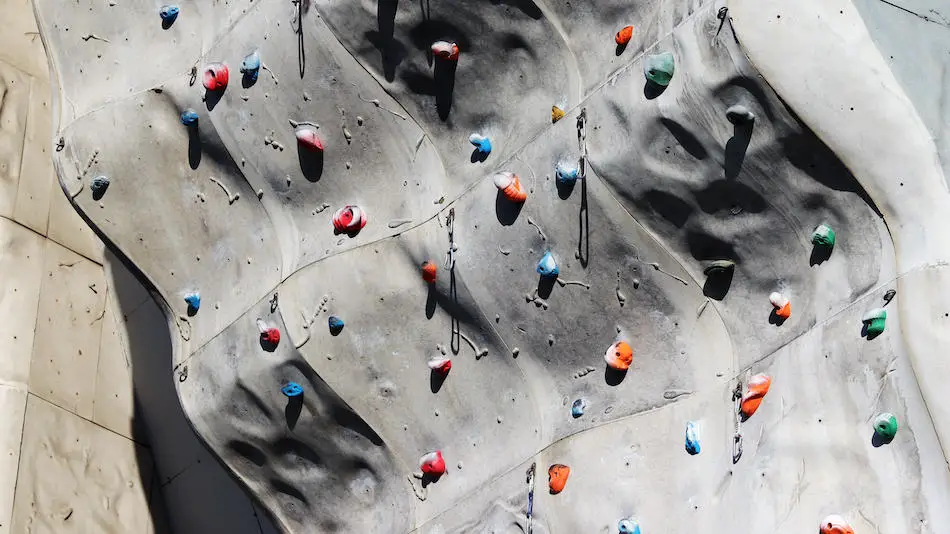
This one is a bit of a cop-out, but it’s still worth talking about.
For people who view dry tooling as a way to train endurance for long ice climbing routes, going indoors can be a lot easier than trying to find a suitable outdoor location. Pick up a pair of Dry Ice climbing tools, strap on your mountaineering or approach shoes, and do laps on the auto belay until a staff member kicks you off.
This won’t give you the same experience or technical challenge as a good outdoor route will, but for keeping your body in shape, it might actually be the best option.
How Can You Minimize the Impact You Have?
Now that we’ve talked about where you can dry tool, let’s discuss a little bit about what you can do to minimize your impact.
Just because you’re in a place where it’s okay to dry tool doesn’t mean you should be unaware of the damage you’re having on the rock. Just like climbing has its own set of ethics, such as not smearing aimlessly with your feet and making sure to keep the crag clean, dry toolers have a duty to preserve the routes for as long as possible.
The single best thing you can do when dry tooling is to be careful with your placements. Remember, your tools are sharp, and the cause damage to the rock. Scraping pointlessly with your feet because you can’t find a foothold, or jamming your axe where you shouldn’t be, can cause more damage than necessary.
Dry tooling is a delicate sport. You should search lightly with your axes for a place to hook it, and have a foothold in mind before you move your feet. It’s bad practice to go scraping around looking for purchase.
Climbing deliberately and carefully can minimize the impact you have on the rock and leave it in better shape for future generations.
I found some high-quality rock with no established climbing routes on it. Can I dry tool here?
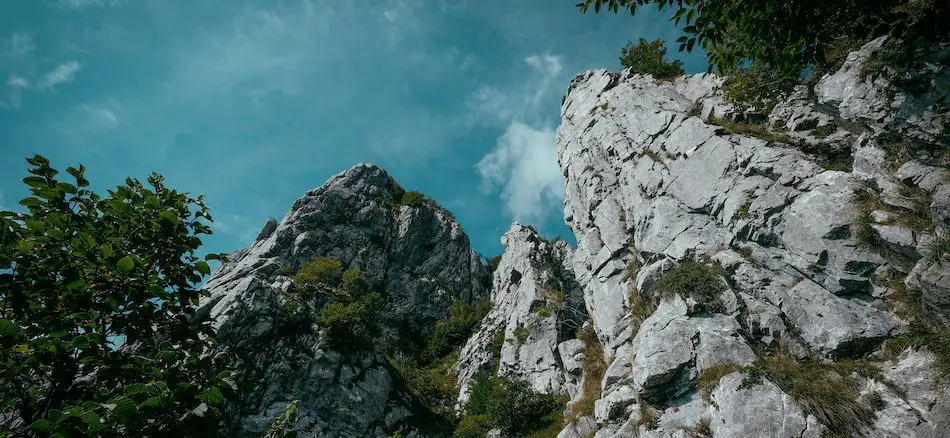
This is a difficult question, and so I’m going to give a broad-ranging answer.
General ethos says that if you find a piece of rock that no one has touched before, you have the ability to make it what you chose. If you want to set up a dry tooling crag there, you’re in your rights to do so.
However, it’s worth considering what I mentioned above concerning the disparity in popularity between climbing and dry tooling. If you live in an area without access to good rock, you might not get the best reception if you hog a high-quality location for you and the half-dozen other people who like to dry tool. I’m not saying don’t do it; just keep in mind that people won’t be happy with you.
As with most things in life, the best solution can actually be to ask around and see what other people think. Reach out to your local climbing community, ask park rangers, and try to get a feel as to what the general consensus might be.
Maybe there’s some sort of compromise, where you set up a few dry tooling routes and leave the res for the climbers. Maybe people won’t care at all. Whatever the outcome, if can never hurt to reach out and ask.
Finding a Dry Tooling Spot Near You
So, finally, let’s discuss what some of your options are when it comes to actually finding the dry tooling locations near you. Before you go damaging any rock, I would suggest the following avenues to discover what the established dry tooling hotspots are:
- Guidebooks: A lot of good guidebooks will make mention of crags where mixed climbing and dry tooling is considered acceptable.
- Local communities: Climbing gyms, forums, and Facebook groups are all a good way to get in contact with climbers in your area. Ask around and see what people have to say about dry tooling in your area.
- Park rangers: Park rangers are a massively helpful resource that you can tap into just about any time. Simply give the ranger’s office a call and ask them. They’re likely to have a wealth of first-hand knowledge that they can share with you. Even if not, they’ll be able to point you in a direction where you can find that knowledge.
- Local organizations: A lot of climbing hotspots will have organizations dedicated to the discovery and upkeep of the crags. Groups like TABVAR or the RRGCC will be able to give you advice on where to go.
Conclusion
So, there we go! That’s everything I have on the ethics of dry tooling. Thanks for reading, and remember to stay safe!
